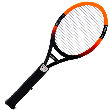Sugar ants naturally nest in soils and are omnivorous. They collect nectar, honeydew and other plant secretions. They also east small animals and invertebrates like caterpillars. Sugar ants do not sting. They are able to secrete acid from their abdomens to frighten away predators. If they feel their colony is in danger, they will attack in a swarm.
Sugar ants thrive in warm humid climates. They nest outside under items on the ground like under mulch, under loose tree bark, in potted plants or in piles of things like wood or leaves. Nests can also be established inside a home within walls, beneath carpeting or other voided spaces. You can easily find them in suburban areas foraging for food under street lights. They are attracted to spills, stains and any trace of food crumbs. Once in your house they can be a pest.
You can prevent sugar ants from coming in my keeping a clean kitchen. Do not leave food out on counters. Do dishes regularly and keep the area clean and dry. Keep foods sealed in airtight containers made of plastic of glass. Clean up spills immediately. Vacuum to pick up any small traces of foods. You will notice sugar ants in the evenings, they return to their nests at dawn. They have a keen sense of smell and can detect a delectable treat within a 25 foot radius.
Because these ants can grow into huge colonies with multiple queens they can be difficult to control. You may need to spray insecticides multiple times on the site directly. Colonies and sub-colonies found in the ground should be drenched with residual insecticide to remedy the problem.
As a second line of defense, use a granular insecticide to trickle down into the areas that a surface liquid may not penetrate. This is especially useful around the perimeter of the home where ants are likely to be nesting.
Baits can be used indoors if you are not certain where they are holding up in the house. Set them near the area they are foraging. Baits come in spill proof containers, but should be kept out of reach of small children.
Sugar ants are basically harmless and do not carry disease, however, they can be annoying in your home. The best way to manage them is to keep a clean and dry environment in the kitchen especially around the sink area.

Zap Flying Bugs! Simply press the button and swing. Once the fly, wasp, mosquito, or bug touches the screen it is instantly zapped! Simple to use and totally effective. No cords to tangle; uses only two AA batteries. Check out Executioner Flying Bug Swatter today!
If you've ever wondered how to get rid of pesky ants without using harmful chemicals and pesticides, there are some great ...
Discover MoreInstead of reaching for that can of bug spray or buying toxic pesticides and insecticides, use two common household ...
Discover MoreWhy spend a lot of money on bug sprays and baits that are not effective, when you can make homemade ant bait at home for ...
Discover MoreThere are currently no comments for this tip. (Be the first to leave your comment—just use the simple form above!)
Copyright © 2026 Sharon Parq Associates, Inc.
Comments